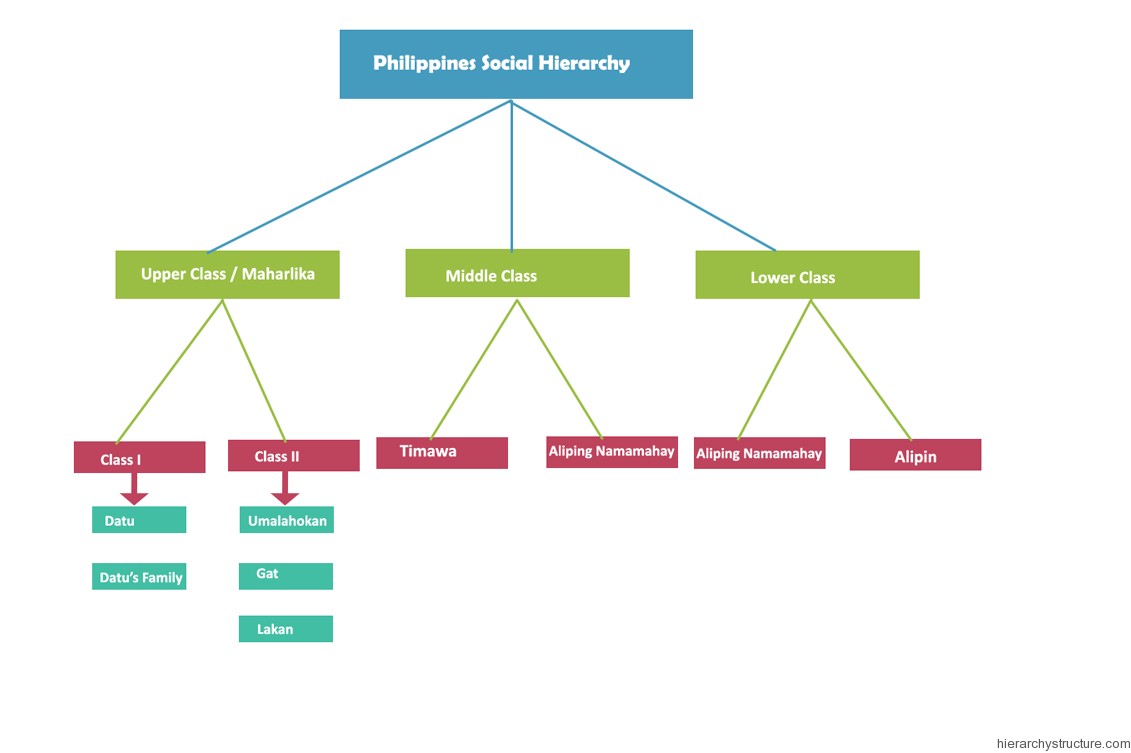A social dissection is a basic categorization method whereby a community ranks one another as superior or inferior. Although there are many factors that contribute in the social segregation of people but majorly this ranking & evaluation is done on the basis of authority, wealth, status and social influence.
This was done as an appropriate hierarchical organization & arrangement of these social classes form specific social groups in the society. Philippines social hierarchy was also affected by this social stratification. In Philippine there were broadly three social classes which also got sub categorized further. The Philippine social hierarchy is depicted here in a down sliding order pattern with the topmost status holder social class on the highest levels and the other lower classes in a vertical manner:

Upper Class / Maharlika
These were the top most authority holder in this hierarchy and the richest of all in the Philippines’ social hierarchy. This social class further got divided and sub divided as follow:
- Class I– This was the class of leader of the society and his family. It incorporated the following:
- Datu
- Datu’s Family
- Class II– These were inferior to Datu and his family but superior to rest of the people of Philippine. The people in this class were involved in administrative works like trading, lawmaking, warfare, implementing of the laws, handling and taking care of rituals and religion.
- Umalahokan
- Gat
- Lakan
Middle Class
This was the middle level social class of the hierarchy. It further incorporated two social classes that are portrayed as below. Just have a look:
- Timawa – These were the Freed Slaves. They bought their freedom by some possible mean. They were engaged in agriculture, boat making, livestock, carpentry, hunting, fishing and many more such manual work. They were allowed to get married and had family of their own.
- Aliping Namamahay – These were also sort of slaves but had some rights provided by their owners. They could get themselves free by any means possible at that time. When an Aliping Namamahay bought his freedom, he then became a Timawa.
Lower Class
This was the lowest class of the hierarchy. It further incorporated into two classes that are described as below:
- Aliping Sangigilid – This was the poorest class of the Philippines’ social hierarchy. These people had zero or negligible rights. They were not allowed to own a property in the country. They were not even allowed to get married. They were pretty much like slaves who could be traded or even sold out by their owners and were not allowed to repulse their master’s decision.
- Alipin – This was the lowest most class in Philippines’ social hierarchy. These were people who had done crime in the past. People would inherit the ‘Alipin’ blood from their criminal parents. There were also some other sort of Alipin who were buried under huge debts.
Know more about Philippines Political Hierarchy
